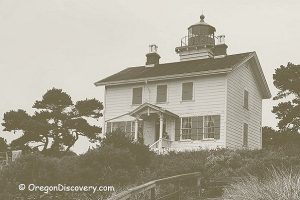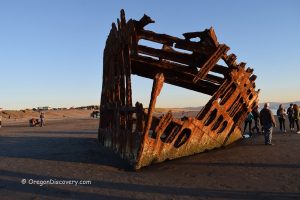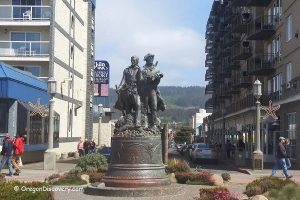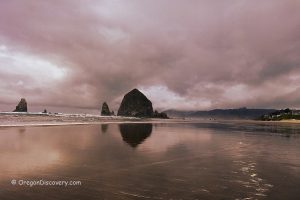• Astoria is the oldest American settlement west of the Rocky Mountains
• The city's history is deeply connected to the discovery of new Pacific territories in 1804
Lewis and Clark Expedition
Captain Meriwether Lewis and second lieutenant William Clark led their Corps of Discovery, consisting of 40 soldiers and crew members, to find a route to the Pacific Ocean.
Lewis and Clark arrived at the mouth of the Columbia River on November 7, 1805. They established Fort Clatsop to spend the winter of 1805-1806 there while gathering information on resources, land, and native inhabitants. Simultaneously, the explorers were actively getting ready for their return journey – they hunted, made salt, gathered and preserved food. They also traded with the Clatsop, Chinook, and Tillamook indigenous tribes.
The tremendous success of the Lewis and Clark expedition opened a new page in the discovery and mapping of the new Pacific territories and the exploration of their natural resources. It also led to the creation of new settlements there.
John Jacob Astor and the Pacific Fur Company
In 1810, John Jacob Astor, the owner of the Pacific Fur Company, sent another expedition on the ship named 'Tonquin.' The goal was to establish a fur-trading post. In 1811, Fort Astoria, which would later become the town of Astoria, was formed at the mouth of the Columbia River. This town was the first primary and permanent settlement in the Pacific Northwest.
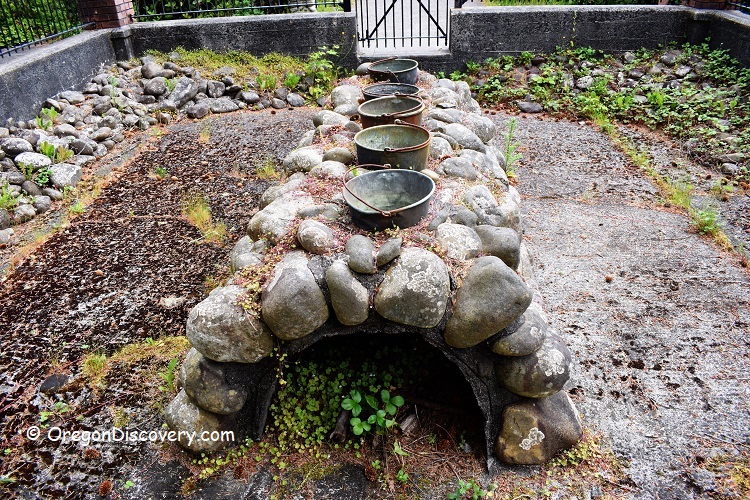
Conflict for Astoria with Great Britain
In 1811, David Thompson, the British explorer of the Pacific Coast, became the first pioneer who navigated the Columbia River to Fort Astoria. David Thompson arrived at the fort two months after the Pacific Fur Company's ship did. This timeline explicitly established Astoria as a U.S. settlement rather than a British territory, thus ensuring the Americans’ win in the land boundary dispute with Great Britain.
However, in 1813, during the War of 1812, the Pacific Fur Company had to sell its assets to its competitor, the Canadian North West Company. Afterward, a British warship captured the fort and ultimately sold it to Britain during the same year.
In 1818, the United States received Astoria back. However, it remained under British control until the American pioneers who followed the Oregon Trail came and settled in the Astoria area in the mid-1840s.
In 1846, the Oregon Treaty facilitated the end of the boundary dispute. Britain got control over Vancouver Island north of the 49th parallel, while the United States obtained the lands south of the 49th parallel.
Rapid Growth
The town, which started as a small settlement, grew rapidly. Being a port city, Astoria attracted a lot of immigrants from the East Coast of America, Finland, Norway, and China. In 1847, the city became home to the first U.S. post office in the American Northwest.
Human Trafficking
Human trafficking flourished in Astoria, just like it did in Portland. From the 1850s to the 1950s, the most common practice was “shanghaiing,” which involved forcing men to work at sea.
There was a consistent shortage of strong young men to work on merchant and military ships. To solve that issue, ship owners paid gangs, bar owners, and brothels to supply this much-needed labor.
Drunk or drugged men were taken to the ships sailing into the ocean and forced to work there. There was no escape.
Destructive Fires
Astoria could have become a multi-million industrial and tourist city, repeating the economic success of San Francisco and Seattle. However, two fires in 1883 and 1922 destroyed the city's business center almost to the ground.
The city's commercial center was built on wooden stilts and piers along the Columbia River. Most buildings were also made of lumber placed on wooden pillars adjacent to the docks. Both fires destroyed
the entire city center. The fire of 1922 was especially devastating. It lasted 11 hours and turned 32 blocks, 40 acres of buildings, and the whole commercial center to ashes.
After the last fire, Astoria’s new downtown and business center were reconstructed with better fire safety in mind. Nowadays, the city center is a National Historic District representing 1920s America, contrasting with the 1880s-era Victorian houses on the hills nearby.
You May Also Like




